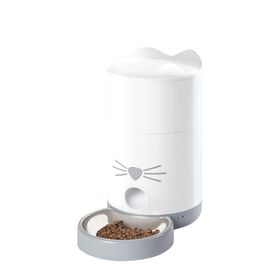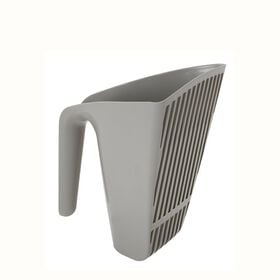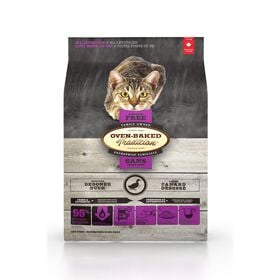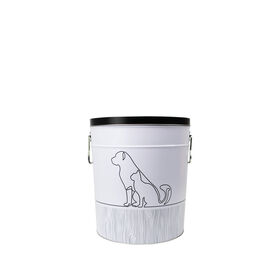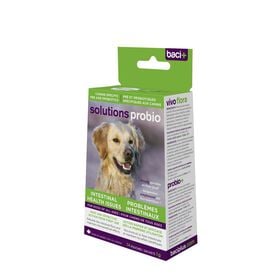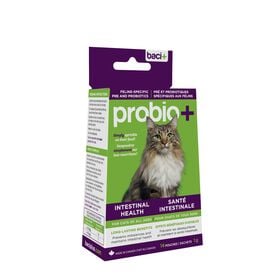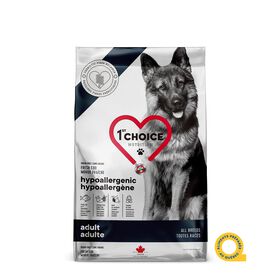Changing your pet’s food may seem complicated, but with the right steps, the transition can be smooth and stress-free! Whether it’s to adapt to their age, improve the quality of their diet, or address a specific need, managing this change properly is essential for their well-being. Here are our tips for a successful transition.
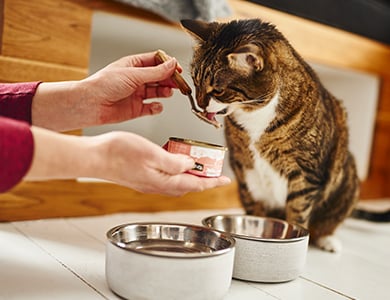
When and why should you change your pet's food?
Several reasons may justify switching your dog or cat’s food:
- A change in life stage. A puppy or kitten becoming an adult, then an adult transitioning to a senior diet.
- A new type of food. You may want to try a different diet, such as raw, frozen, dehydrated, wet, semi-moist, or freeze-dried food, to better meet your pet’s needs.
- A health issue. Signs such as digestive difficulties, a dull coat, excessive shedding, or the development of a food allergy may indicate that their current diet is no longer suitable.
- Specific needs. Some formulas are designed to address particular concerns, such as dental health, weight management, sensitive skin and stomach, or joint support.
- Choosing a local product. Opting for locally made food not only supports the local economy but also ensures a diet with carefully controlled ingredient quality and sourcing.
No matter the reason for the change, it’s important to transition gradually to avoid digestive issues. It’s essential to gradually introduce the new food over a period of 7 to 10 days. Start with a mix of 75% old food and 25% new food. Gradually decrease the amount of old food while increasing the new food until the transition is complete.
Why is it critical to measure food?
Malnutrition and becoming overweight are the main risks involved in miscalculating your pet’s daily food intake.
At the time of transition, it is important to follow the daily feeding guide, taking into account the previous food AND the new food intakes based on the transition chart below:
Let’s take the example of a cat that, until this point, ate 2 cups of food per day. The new food’s packaging shows that, based on your cat’s weight, the daily intake should be 1 cup per day. You must proceed this way for the following days:
- 1st and 2nd days: 1 ½ cups (173 g) of the previous food and ¼ cup (29 g) of the new food.
- 3rd and 4th days: 1 cup (115 g) of the previous food and ½ cup (58 g) of the new food.
- 5th and 6th days: ½ cup (58 g) of the previous food and ¾ cup (86 g) of new the food.
- 7th day: 1 cup (115 g) of new the food.
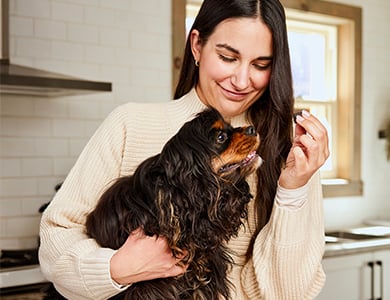
Why you shouldn’t unnecessarily change your pet’s food
Your pet’s digestive system gets used to the food it is being fed, which enables it to properly assimilate all of the essential nutrients from its diet. Changing the type of dry food too often will decrease the amount of nutrients absorbed.
Your cat or dog could also become picky. It will learn that, by frowning upon what you feed it, you will serve up a new menu, and is likely to repeat this behavior at will.
If you find yourself in a situation where you have no choice but to change your pet’s food, ask your veterinarian or our store employees for advice.
Finally, know that each animal is different and unique with different needs. It is therefore important to find the right food that is adapted to your pet.


